 Fred's ImageMagick Scripts
Fred's ImageMagick Scripts
Copyright © Fred Weinhaus My scripts are available free of charge for non-commercial (non-profit) use, ONLY. For use of my scripts in commercial (for-profit) environments or non-free applications, please contact me (Fred Weinhaus) for licensing arrangements. My email address is fmw at alink dot net. If you: 1) redistribute, 2) incorporate any of these scripts into other free applications or 3) reprogram them in another scripting language, then you must contact me for permission, especially if the result might be used in a commercial or for-profit environment. Usage, whether stated or not in the script, is restricted to the above licensing arrangements. It is also subject, in a subordinate manner, to the ImageMagick license, which can be found at: http://www.imagemagick.org/script/license.php Please read the Pointers For Use on my home page to properly install and customize my scripts. |
|
Applies a video glitch effect to an image. |
last modified: January 31, 2019
|
USAGE: videoglitch [-c colors] [-d distance] [-a amplitude ] [-n number]
[-t thickness] [-j jaggedness] [-r reseed] infile outfile
-c ... colors ....... colors to use in channel separation; choices are: red-cyan, PURPOSE: To apply a video glitch effect to an image. DESCRIPTION: VIDEOGLITCH applies a video glitch effect to an image. The effect is composed of two parts. The first part is to make a horizontal separation between the red and cyan coloring channels. The second part is to add random horizontal offsets. The random offsets are created from a one column random image with height the same as the input image. Then random height constant gray segments are randomly placed over and replacing parts of the random column image. This image is then expanded horizontally to fill the the width of the input image and used as a displacement map applied to the input image. ARGUMENTS: -c colors ... COLORS to use in channel separation. The choices are: red-cyan (rc), green-magenta (gm) and blue-yellow (by). The default=red-cyan. -d distance ... DISTANCE is the separation distance of the red-cyan channels in the output. Values are integers (positive or negative which controls the direction). The default=-5. -a amplitude ... AMPLITUDE of the horizontal distortion of the glitches. Values are integers>=0. The default=45. -n number ... NUMBER of non-glitch gray spacer segments in the displacement map. Values are integers>0. The default=5. -t thickness ... THICKNESS (or height) of the non-glitch spacer segments. Values are integers>=0. The default=25. -j jaggedness ... JAGGEDNESS of the glitches. Values are integers>0. The default=20. -r reseed ... RESEED is the initial seed value for the random number generator. Values are integers>=0. Default=101. NOTE: This script is not designed for images with transparency. REQUIREMENTS: IM 6.9.9.26 or higher or IM 7.0.7.14 or higher due to the use of -compose stereo. CAVEAT: No guarantee that this script will work on all platforms, nor that trapping of inconsistent parameters is complete and foolproof. Use At Your Own Risk. |
|
Example 1 -- Variation In Colors |
|||
|
Original Image |
|||

|
|||
|
Arguments: | |||
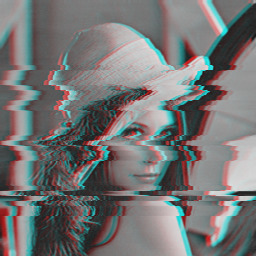
|
|||
|
Arguments: | |||
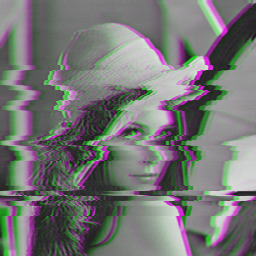
|
|||
|
Arguments: | |||
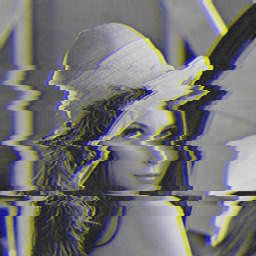
|
|||
|
Example 2 -- Variation In Jaggedness |
|||
|
Original Image |
|||

|
|||
|
Arguments: | |||

|
|||
|
Arguments: | |||

|
|||
|
Arguments: | |||
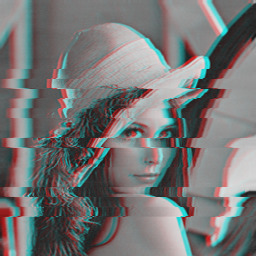
|
|||
|
Arguments: | |||
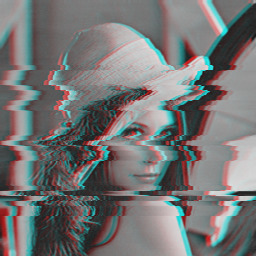
|
|||
|
Arguments: | |||
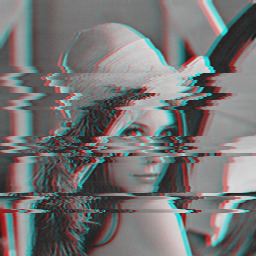
|
|||
|
Arguments: | |||
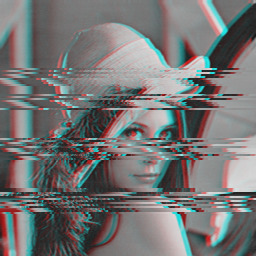
|
|||
|
Arguments: | |||
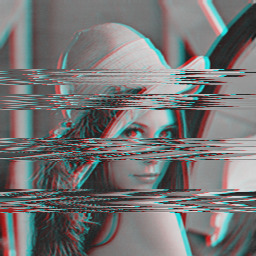
|
|||
|
What the script does is as follows:
This is equivalent to the following IM commands
|